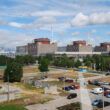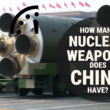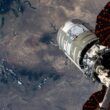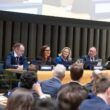The Fukushima tragedy demonstrates that nuclear energy doesn’t make sense
By Arjun Makhijani, July 21, 2011
From the time we learn to walk, mistakes are inherent in the process of human learning. An essential design principle for technology should be that we, the generations that benefit, should bear the major costs of its mistakes. Nuclear power fails this simple test miserably. It is just not possible to pick up the pieces and move on after a grave accident. Land is contaminated for generations. Cancer risks lurk in the shadows. Local economies are destroyed and cannot be restored. Nor have we properly addressed the problem of nuclear waste, even though each year’s operation of a reactor creates enough plutonium (if separated from the waste) to make about 30 nuclear bombs.
Of late, even some staunch environmentalists, like James Lovelock of Gaia hypothesis fame, have become nuclear power advocates. They argue that nuclear power is essential to solving the challenges of climate change. But this is deeply flawed thinking. Nuclear power is not a game-changer, panacea, or even vital piece of the energy puzzle. It is an unpredictable, existentially dangerous, and far too costly energy source that would have us trade carbon dioxide for plutonium.
Meltdown rates and bureaucracy. Those who promote nuclear power have hidden behind two related assumptions: first, that severe accidents will be extremely rare — once every several hundred years if several hundred reactors are operational; and, second, that we are prescient enough to know the accident mechanisms and calculate their probabilities.
The current tally: one in every 100 commercial light water power reactors, the most common design in the world (including all operating US commercial reactors), has now had a partial or full meltdown before its first 40-year license period has expired — three at Fukushima Daiichi and one at Three Mile Island. The Fukushima meltdowns have had serious containment failures. In addition, there have been four hydrogen explosions and heating up or boiling of one or more spent fuel pools, which often have larger stores of long-lived radioactivity than the reactors. This severe accident rate — one every five to 10 years for which a few hundred reactors have been operational — is far greater than regulators and proponents imagine. So, we simply do not know how to reliably calculate the probabilities of such events, which remain rare in theory, but evidently not so rare in practice. And each accident sequence has been unique. There even appear to be differences among the meltdowns at the Fukushima reactors. Still, the US regulatory process moves ahead, relying on the perilous notion that these terribly dangerous events can be calculated — though the official numbers are now in the realm of statistical fiction.
Chernobyl was written off by many in the West as being attributable to poor design and the Soviet dictatorial system. Three Mile Island released radioactivity but did not create severe offsite hot spots; as a result, some even pointed to it as a very rare event and a demonstration of nuclear safety. But Fukushima has given lie to the idea that severe accidents are very rare or that the consequences for the public are not disastrous. They already are. Hot spots dot the landscape around Fukushima. The livelihoods of farming and fishing families have been destroyed; the seas have become radioactive for miles around. Tens of thousands of people have been displaced; many or most will not be able to return to radioactively contaminated homes. Parents had to protest vigorously to prevent their children from being ordered to schools within radioactive hot spots, which would irradiate the children as much as nuclear workers. And still the radioactivity releases continue, months after the earthquake and tsunami.
Worse, while the US government actively ignores the failure rates of nuclear power plants, it still encourages their growth by offering loan guarantees, among other subsidies. In a sensible world, where government was above all dedicated to public safety, the Nuclear Regulatory Commission (NRC) would have stopped licensing new plants and re-licensing existing ones. But, the process marches on, while a review of Fukushima is conducted on the side.
Take the Vermont Yankee nuclear power plant: It has more spent fuel in its pool than all four pools at the stricken Fukushima reactors put together, and it is of the same Mark 1 design. Nevertheless, the NRC re-licensed Vermont Yankee on March 21, just 10 days after the start of the Fukushima disaster and despite the National Academies’ conclusion — pre-Fukushima — that dry-cask storage of spent fuel is a much better defense against terrorism. Additionally, the dry casks at Fukushima did not leak radiation, even in the face of both an earthquake and a tsunami. Most of the spent fuel at Vermont Yankee has cooled down enough to be put into dry storage. Yet, the NRC did not require that that be done as a condition of re-licensing the reactor. The NRC made a bet that reactor spent fuel pools are safe enough — based on accident probabilities that have been rendered obsolete. That much was evident well before March 21, 2011.
Design flaws. In addition to dismissing smart design, like hardened dry-cask storage for aged spent fuel, nuclear power plants, even new ones, continue to incorporate a central design flaw. All four meltdowns had a common root in a single design feature: zircaloy fuel rods, which are used in all commercial light water reactors. Zircaloy is composed of zirconium (more than 95 percent) with small amounts of tin or niobium, or both. The zircaloy tubes contain the uranium-dioxide fuel pellets that sustain the chain reaction. Zirconium was chosen because it absorbs relatively few neutrons and because it has excellent heat-transfer properties. But there is a price: Zirconium reacts with steam to form zirconium dioxide and hydrogen gas — an exothermic reaction that increases the temperature in the reactor even more than the loss of coolant alone. So, once the fuel is uncovered and the water in contact with the fuel rod begins to boil, both the process of a meltdown and the risk of an explosion accelerate.
This problem with zirconium was known early on. But, with its good heat conductivity and low neutron-absorption cross-section, it was just too attractive to nuclear power plant designers. Even after the Three Mile Island accident, there was no concerted effort to create a more robust fuel-rod design. Nor does there seem to be now — after three more meltdowns and four hydrogen explosions.
The price tag for disaster. Insurance, too, is a problem hiding in plain sight. Under the Price Anderson Act, Congress has limited the liability of the whole nuclear industry to about $12 billion per accident. Yet, according to a 1997 Brookhaven National Laboratory study done for the NRC , the worst-case spent fuel pool accident in a densely populated area would result in about 140,000 excess cancer deaths and $540 billion in damages (roughly $700 billion in 2010 dollars). The US government has promised to assume the rest of the liability, though there is no practical legislative provision for it.
Of course, no private insurance company or even consortium of insurance companies would shoulder the fearsome liabilities arising from severe nuclear accidents. Governments seem to want to go where insurance companies fear to tread. An interesting form of capitalism seems to be at work: privatize profits and socialize liabilities. It will be some time before all the damage and liabilities arising from the Fukushima accident can be tallied, but there is no doubt that $12 billion is a pitifully small amount in the face of the losses, dislocation, and damage — not only in Japan, but globally.
Nuclear power and nuclear bombs. Clearly, nuclear power is different from fossil fuels in that it has low carbon emissions (and, in principle, in an all-nuclear economy, none). But nuclear power is also different from fossil fuels in a far more sinister way: Nuclear fission is the only energy source that can be used to hide a nuclear weapon infrastructure.
In contemplating US participation in a nuclear weapons convention, J. Robert Oppenheimer wrote in 1946: “We know very well what we would do if we signed such a convention: we would not make atomic weapons, at least not to start with, but we would build enormous plants, and we would call them power plants. … We would design these plants in such a way that they could be converted with the maximum ease and the minimum time delay to the production of atomic weapons.” More recently, Mohammed ElBaradei, former head of the International Atomic Energy Agency, said of the rush to nuclear power by a number of countries: “You don’t really even need to have a nuclear weapon. It’s enough to buy yourself an insurance policy by developing the capability and then sit on it. Let’s not kid ourselves: 90 percent of it is insurance, a deterrence.”
Solutions. Nuclear power reactors are just boilers. Is it sensible to make plutonium and highly radioactive fission products just to boil water? Is that a sensible thing to do even if it were cheap, which it is not? Is that the limit of human technological creativity?
Luckily, the world has a free thermonuclear reactor in the sky: the sun, which also animates the winds. Innovations in renewable resources make it possible to take nuclear power out of our energy future. Wind power, even with storage (using compressed air pumped into caverns) is cheaper than new nuclear power plants. Solar photovoltaics are expected to be cheaper than coal without carbon capture in less than a decade (it is official US policy to try to achieve that goal with its “Sunshot Initiative“). Germany has decided to phase out nuclear power by 2022 while reducing carbon emissions. They will use solar power, onshore and offshore wind energy, distributed combined heat and power, advanced efficiency technologies, and a very smart grid. Italy and Switzerland have joined the Germans. The Japanese appear to be headed in the same direction, at least if Prime Minster Naoto Kan has his way.
The United States — and indeed the rest of the world — would be wise to do the same. Even if the United States had bold regulators who were unafraid to shut down unsafe plants or mandate a change in fuel design, they could still not possibly have the perfect crystal ball that nuclear reactors demand. And, as it is, the United States has regulators who operate in a political atmosphere that frowns on regulation and even on government itself. No wonder nuclear regulators are too timid to take the modest step of ordering dry storage of spent fuel to guard against terrorist attacks. The United States needs to phase out nuclear reactors in an orderly way — before there is a Fukushima-scale human tragedy and deep environmental and economic damage.
Topics: Nuclear Energy, Nuclear Weapons
Share: [addthis tool="addthis_inline_share_toolbox"]














